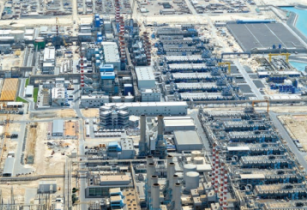Schneider Electric, the French multinational corporation that specialises in energy management, automation solutions, spanning hardware, software and services, is working with Dubai Municipality to explore Big Data analytics across drainage and the sewerage networks
Water is a scare commodity in the hydrocarbons-rich Middle East and North Africa (MENA) region, with water resources per capita barely one-sixth of the global average, according to the United Nations? FAO.
Groundwater resources are fast depleting while competition for water is increasing. The scale of water fragility is exacerbated by largely arid to the hyper-arid and highly variable climate across MENA countries, which requires coordinated regional policy responses and improved water management.
?Despite investment in infrastructure and institutions, these problems are likely to deteriorate as water scarcity grows,? warns the World Bank?s special report Building Resilience to Shocks and Protracted Crises in the Middle East and North Africa (2018). Demographic trends, rising incomes and expanding cities are fuelling robust demand for water and water-intensive food products, while the supply side is more erratic with poor service delivery in most non-Gulf Cooperation Council (GCC) countries.
The Middle East has developed a greater share of its available water resources, as well as constructing more water storage facilities per capita compared to other regions. Also, several countries, notably Egypt, Iraq and Syria, have access to considerable surface water resources, which flow from outside their boundaries. Almost all MENA countries share at least one ?aquifer? with a neighbouring country. Aquifer is an underground layer of water-bearing permeable rock from which groundwater can be extracted using water wells.
Impacts of water fragility
Most non-GCC countries are struggling to manage their water resources efficiently and to expand coverage of piped water and sanitation services. An already high level of water resource development and rising usage, particularly from manufacturing and industrial sectors, are driving water scarcity, thereby posing serious regional risks to human development and sustainable economic growth in coming years.
Climate change could inflict dire consequences upon a hyper-arid region, reflected in losses in agriculture, income, property and health. A 2016 World Bank report High and Dry: Climate Change, Water and the Economy found that climatic risks are more severe in MENA than other regions. It calculated that under a businesses-usual scenario climate change induced water-fragility could reduce regional GDP by between six and 14 per cent by 2050, compared to the global average estimate of 0.09 to -0.49 per cent.
Surging demand and competing forms of water use in a country (e.g. drinking water, water for industry, irrigation and the maintenance of ecosystems? functions) are diminishing supplies for agriculture, cities and businesses. Moreover, incentive systems across MENA do not accurately reflect the value of water and investment. Cheap water encourages overuse and deters conservation.
Strengthening water management
MENA countries have made tangible progress to improve water practices and governance in recent decades. Access, efficiency, and quality of water supply is generally on a level with peer developing regions, although large disparities exist within countries. Public-private partnerships (PPPs) in utilities are very active, especially in the GCC-bloc ? structured mostly on management and performance-based contracts. The public utility retains asset ownership; while operation and maintenance of municipal water and wastewater systems fall under the private contractor ? aimed at enhancing service delivery over the duration of the agreement.
Most non-GCC countries still face problems regarding proper sanitation and wastewater treatment, where septic and cesspits tanks predominate. A septic tank is a settlement chamber that provides treatment to sewerage and drainage water; a cesspit is a sealed underground tank to collect wastewater and sewerage, but there is no processing or treatment of water.
Furthermore, some towns lack sufficient bulk water sources, with supply intervals stretching into weeks or months. Connection rates to the network are reportedly as low as 50 per cent even in capital cities like Amman, Baghdad and Beirut, while physical losses and other non-revenue water can reach 40 per cent (World Bank data).
Desalination in demand
Saudi Arabia, the UAE and Kuwait have the globe?s highest desalination capacities. These three GCC countries alone are responsible for more than one-third of the global desalination capacity. Overall, around 58 per cent of the world?s desalination capacity is in the MENA region, according to the International Energy Agency (IEA). The increase in desalination requirements, due to population growth, is also pushing up energy consumption to produce fresh water, with the knock-on effect of more greenhouse gas emissions and increasing levels of chemicals and brine ejected back into seawater following desalination processes.
Supporting digital skills development, Schneider Electric is training government engineers at the Schneider Electric regional headquarters, with Dubai Municipality recently marking engineering graduation.
Hanan Darwish, cluster president ? Gulf and Pakistan, Schneider Electric, added, ?Our digital solutions provide our customers with ?third layer? applications where they would get the visibility and accessibility on the data on consumption and wastage. Giving them access to this awareness will help them manage water. This is very much required in this part of the world where water is a scarce commodity. For Dubai Municipality, our solutions provide the tools whereby they can effectively measure water management in the emirate.?
For more information, please click on the Issue 5 of Technical Review Middle East






